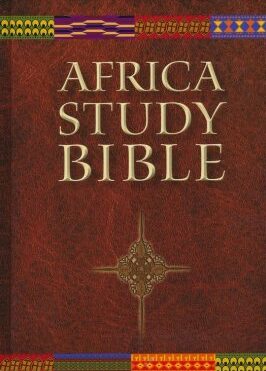The Big Human Factor
It is no news that science and religion often make claims concerning the same things. Sometimes they concur in their proclamations; other times, they do not. For instance, for some 2000 years while science, under the influence of Aristotelianism, maintained that the universe was eternal even though the first page of the Bible vehemently disagrees, proclaiming that the universe had a finite past. Similarly, Galileo, a Christian and scientist, knew about the church’s teaching that the earth was the center of the universe when he proposed heliocentrism. These observations need not be surprising. Whatever else one may think about religion and science, this is true: humans play considerable roles in both endeavors and do so with their messy humanness.
For a long time, Christians believed the Bible to be a sacred book with answers to all areas of life, including science, politics, and national economic structure. This belief is likely a lingering influence of Aristotelianism that many church fathers vigorously championed and defended. However, modern scholarship in biblical studies continues to expose past errors. For instance, whereas it was once thought-and some may yet still believe-that the early chapters of Genesis teach cosmology of some sorts, modern scholarship has shown this to be false.
Similarly, it is a case of an admixture of wild imagination and fantasy to read modern warfare weaponry into the book of Revelation. If Revelation would effectively warn and encourage its first-century Christian recipients, its language must be meaningful and understandable. There is no way the book contemplates machine guns, ballistic missiles, or even artificial intelligence. None of these things would have been meaningful to the ancients. Indeed, contemporary scholarship on the book Revelation has convincingly shown that all the weird imageries in the book are either allusions to the Old Testament or to things familiar to the original recipients.
Scholars have different motivations for doing their works. Some are motivated by a perceived need to square Scripture with modern scientific findings—a very fallacious and concordist approach that does not respect proper hermeneutics. Many others use current controversies, scientific and otherwise, as an occasion to study the claims of biblical texts afresh. The results of such endeavors may or may not square with modern science, but they must be faithful to the text.
The world of science is not very different in its resistance to change. In a paradigm-shifting work, The Structure of Scientific Revolutions, Thomas Kuhn forever changed how we view science. (In fact, the word “paradigm” came into widespread use mainly due to the influence of this work.) Kuhn forcefully advanced a view of progress in science as not smoothly linear. “Normal science,” Kuhn writes, is merely a “puzzle-solving activity . . . highly cumulative enterprise, eminently successful in its aim, the steady extension of the scope and precision of scientific knowledge” (52). This “eminently successful” endeavor to extend “the scope and precision of scientific knowledge” occurs within accepted professional paradigms—some widely accepted rules and standards guiding a scientific program. It is worth stressing that, according to Kuhn, “Normal science does not aim at novelties of fact or theory and, when successful, finds none” (52). That is, normal science is preoccupied with puzzle-solving within a prevalent paradigm.
Normal science is quite resistant to paradigm changes—and for good reasons. “In the development of any science,” Kuhn writes, “the first received paradigm is usually felt to account quite successfully for most of the observations and experiments easily accessible to that science’s practitioners” (64). So, if a practitioner does an experiment and obtains strange results, she would blame it on everything but the accepted paradigm. This is justifiable because, typically, the paradigm is not to blame in normal science works with strange results. A practitioner often identifies instruments or other errors responsible for the peculiar results upon repeating the experiments. Anomalies that will eventually force paradigm changes are only recognized by a practitioner who “knowing with precision what he should expect” (65) but does not obtain under a current paradigm. Even at this stage of scientific progress, the typical next move is not to seek a new theory or paradigm. On the contrary, efforts would be made to fit the anomaly into existing paradigms.
Only after an anomaly has persisted for a long time and the current paradigm is in crisis is a new paradigm sought. As Kuhn observes, history is replete with examples (67-68):
The state of Ptolemaic astronomy was a scandal before Copernicus’ announcement. Galileo’s contributions to the study of motion depended closely upon difficulties discovered in Aristotle’s theory by scholastic critics. Newton’s new theory of light and color originated in the discovery that none of the existing pre-paradigm theories would account for the length of the spectrum, and the wave theory that replaced Newton’s was announced in the midst of growing concern about anomalies in the relation of diffraction and polarization effects to Newton’s theory. Thermodynamics was born from the collision of two existing nineteenth-century physical theories, and quantum mechanics from a variety of difficulties surrounding black-body radiation, specific heats, and the photoelectric effect.
It is worth noting that these changes did not take place in a straightforward tossing of old beliefs for new ideas. Humans do not work like that. Instead, intense back-and-forth exchanges slowly increased the number of adherents to the new paradigm. Kuhn further writes concerning the historical examples above (68):
Furthermore, in all these cases except that of Newton, the awareness of anomaly had lasted so long and penetrated so deep that one can appropriately describe the fields affected by it as in a state of growing crisis. Because it demands large-scale paradigm destruction and major shifts in the problems and techniques of normal science, the emergence of new theories is generally preceded by a period of pronounced professional insecurity. As one might expect, that insecurity is generated by the persistent failure of the puzzles of normal science to come out as they should.
So, science embraces a new paradigm only when anomalies force it upon science. In other words, scientists—at least, in this specific regard—are not that different from the rest of us.
While on paradigms, there is a related issue of science uncompromisingly holding firmly to what we may call a meta-paradigm. To understand this issue, we need to talk about the philosophical underpinning of modern science.
Philosophical Foundations
In Western traditions, the history of modern science is often traced to ancient Greek philosophers who argued about what and how humans may gain knowledge. Indeed, the word “science” derives from the Latin scientia, meaning “knowledge.” In a very true sense, science is merely a continuation of ancient attempts to understand this world.
Science is the most successful human undertaking ever. But—and this is very critical—people of various metaphysical persuasions write this success story. Indeed, modern science owes its emphasis on experimentation to theists. Christians like Francis Bacon, Isaac Newton, Johannes Kepler, and Galileo played crucial roles in developing the Scientific Method further. Readers may recall that Galileo was the astronomer who challenged the Aristotelian belief, sanctioned by the Roman Catholic church, that the earth was the center of the universe. In other words, Galileo was not afraid to follow the evidence wherever it led, even if it momentarily seemed contrary to the church’s teachings.
Types of Naturalism
Naturalism, the belief that everything arises from natural properties and causes, undergirds modern science. Naturalism has two forms: metaphysical (or ontological) and methodological naturalisms. As the name implies, ontological naturalism is a positive claim that nature is all that exists; nature is the ultimate reality. Everything that exists does so in nature; there is not a thing outside of nature. Indeed, strictly speaking, there is no “outside” of nature. This form is the logically stronger kind of naturalism, implying atheism. It rules out the existence of spiritual or non-natural, immaterial, non-spatial, non-temporal beings.
On the other hand, methodological naturalism is a position that seeks natural explanations of the world. Methodological naturalism, at least in principle, is agnostic about the claims that spiritual beings do not exist. It is the weaker form of naturalism and does not rule out the existence of spiritual beings, even if committed to natural explanations. This is the form of naturalism that theist scientists like Descartes, Newton, Kepler, and Galileo affirmed. For some of these scientists, it was important to extricate science from the power-control of the Roman Catholic church. For these Christian scientists, science legitimately addresses itself to natural phenomena—something the Nobel Prize-winning scientist Peter M. Medawar called the “limits of science.”
In practice, many modern scientists do conflate these two categories of naturalism. Convinced of the truth of metaphysical naturalism, some scientists today push for scientism, a belief that science is the only objective means of all knowledge. This belief is false on two grounds. First, there is no reason to think that it is true—there are no successful arguments for metaphysical naturalism. Secondly, the claim that science is the only objective seeker of truth would require universities to close their mathematics, philosophy (and logic), and other humanities departments. It is simply demonstrably false.
Scholars have also critiqued the place of methodological naturalism in science. Given that it remains an open question whether metaphysical naturalism is true, how reasonable is science’s commitment to natural explanations? Put another way, should only natural explanations be the only acceptable category in science under all conditions? Let us consider two different kinds of examples.
Suppose that there is a knotty issue that has escaped the grip of science for a very, very, very long time, such as the search for a Theory of Everything that would seamlessly combine quantum theory and general relativity. Would it be reasonable to posit a supernatural explanation here? The answer to this question is an emphatic NO. First, positing God as an explanation here does not achieve anything—scientists still will not have anything to work with; God is not quite useful here. Such a move to use God to plug up a gap in our knowledge of the world is called the God of the gaps fallacy. Such a god is bound to increasingly diminish as the might wave of scientific advancement sweeps over it. Hence, this is a legitimate place for science to insist on only natural explanations (or theories).
Now, let us suppose that there is another knotty issue about which all available data show with high probability that natural explanations are unlikely. Is it still reasonable to insist on only natural explanations? For example, Craig S. Keener details in his massive two-volume work, Miracles, cases of miracles captured in medical journals.
Again, consider another more familiar case. Historians generally agree on the following facts about the claim of Jesus’ resurrection: the empty tomb, Jesus’ postmortem appearances, and the origin of the Apostolic faith in a resurrected Christ. In this case, there are numerous naturalistic theories advanced to account for these facts, but none is successful. Yet, many historians who grant the three facts above would not entertain a supernatural explanation, just as the Gospels report. Why not? The typical reason is a mixture of confusing methodological naturalism for ontological naturalism and a reliance on a long-debunked argument by David Hume against miracles.
As we have shown, both science and religion are social enterprises. The human adherents of each enterprise can exaggerate or misrepresent the legitimate claims (or reach) of their respective programs. Furthermore, the practitioners of each program can be quite resistant to change for various program-specific reasons. My goal here is to sketch out the contours of the controversy so that the African Christians may be armed to make informed decisions. Next, we shall look at historical cases where religion and science are supposed to have clashed big time.
Bibliographic Notes
- Craig, William Lane. In Quest of the Historical Adam: A Biblical and Scientific Exploration. Eerdmans, 2021.
2 (a). Beale, Gregory K. John’s Use of the Old Testament in Revelation. T&T Clark, 2015
2 (b). Moyise, Steve. The Old Testament in the book of Revelation. T&T Clark, 2014.
3. Medawar, Peter B. The Limits of Science. HarperCollins, 1984.
4. Keener, Craig S. Miracles Today: The Supernatural Work of God in the Modern World. Baker Academic, 2021.
5. Earman, John. Hume’s Abject Failure: The Argument Against Miracles. 1st ed., Oxford University, 2000.
Works Cited
Keener, Craig S. Miracles: The Credibility of the New Testament Accounts. Baker Academic, 2011.
Kuhn, Thomas S, and Hacking, Ian. The Structure of Scientific Revolutions. 4th ed., University of Chicago Press, 2012.




